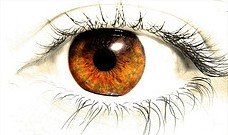Lutein is the natural support for Eye Health
Antioxidant support for eye health
Lutein is carotenoid - a natural pigment found in high concentrations in dark green vegetables (kale, collard greens, Brussels sprouts, spinach, broccoli, lettuce, beans and peas), in starchy vegetables (corn and peas), fruits (kiwi fruit and oranges)
Lutein and its structurally related twin (isomer) zeaxanthin are the most powerful carotenoids for contributing to clear, healthy vision
Lutein plays a majoy role in promoting and maintaining eye health
Lutein is the principal carotenoid found in the central area of the retina called macula
Macula: a small area of the retina at the back of the eye, which is responsible for central, most acute vision
Lutein is the dominant pigment in the peripheral retina while zeaxanthin is more concentrated into the inner macula.
Retina: the inner layer of the eye containing light-sensitive cells that connect with the brain through the optic nerve. It also contains retinal blood vessels which feed the retina and which can be affected by diabetes
Fovea: a tiny spot located in the macula that is responsible for the clearest vision on the retina
Lutein is also present in smaller amounts in the skin, breast and other tissues
Research suggest that Lutein might act as a filter to protect the macula
Lutein is naturally found in healthy eyes, and since it is not made in the body, it must be obtained from dietary sources, it's important to take it everyday
Lutein has been studied for it's ability to support skin health
Lutein is considered a dietary xanthophyll that helps promote the health of photoreceptors in the eye to support visual health
Xanthophylls, along with carotenes are part of the family of carotenoids, a group of about 600 fat-soluble compounds which provide color as we can see it in nature
Lutein plays a role in maintenance of eye health and is the principal carotenoid found in the central area of the retina called macula
Lutein forms a very efficient filter for blue-light that reaches the back of the eye and likely contribute to the reduction of oxidative stress on the retina.
Lutein act directly as an antioxidant and decrease the adverse effects of oxidative stress on the retina that results from metabolism and light.
Cataract is one of the major causes of preventable blindness throughout the world.
Cataract is characterized by the opacification on or within the lens, caused by the precipitation of oxidatively damaged proteins.
"Lutein is the major carotenoid in the fruit and vegetable rich Asian diet, and a minor one in the typical American diet which doesn´t contain enough fruits and vegetables
There is very good evidence that the lutein in food helps protect against cataracts and macular degeneration, two common, age-related eye disorders."
Jeffery Blumberg, Ph.D., says studies have shown that diets rich in lutein may cut the risk of cataracts by up to 20 percent and age-related macular degeneration by up to 40 percent.
"Lutein and zeaxanthin, are concentrated in the macular region of the retina and the eye lens, where they protect the eye from harmful ultraviolet light."
Research suggests a minimum of 6-10 mg per day of lutein from dark green leafy vegetables and other sources is necessary to realize lutein’s health benefits.
Even if you eat a balanced diet, you’d need a large bowl of fresh spinach to get about 6 mg of lutein.
Most Americans just don’t consume enough foods rich in lutein for their eye health
EYE HEALTH NEWS
Cataract is the single biggest cause of blindness globally, causing the lens of the eye to become cloudy.
Surgery to replace the affected lens with a plastic one called an intraocular lens is highly cost-effective.
India has pledged more than $US250m to set up vision centers with screening equipment, eye banks and eye donation centers and other initiatives to expand eye health care services to rural areas.
Last year China launched its unimaginatively titled "Million Cataract Surgeries Initiative", whereby each operation is subsidized by 800 yuan (US$124). 19 provinces have signed up for the program
Cataracts are a leading cause of blindness among older adults in the United States.
More than 20 million Americans age 40 and older have cataracts
More than half of all Americans have cataracts by the time they are 80 years old.
The following problems may indicate that you have a cataract:
* You have blurred vision, double vision, ghost images, or the sense of a "film" over your eyes.
* Lights seem too dim for reading or close-up work, or you are "dazzled" by strong light.
* You change eyeglass prescriptions often and the change does not seem to help your vision
You may also be able to see the cataract in your eye. It may look like a milky or yellowish spot in your pupil
Researchers found that women have 38% less macular pigment optical density (MPOD) than men - suggesting that lutein supplementation may be particularly crucial for women in terms of promoting eye health
Looking to SHOP ! or looking to make extra CASH ! FINANCING AVAILABLE








